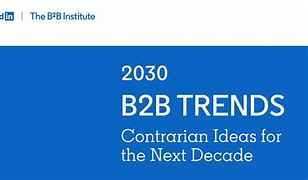It’s over 21 years since the Incorporated Society of British Advertisers published a report that claimed that “Payment By Results will form 75 per cent of advertising agency contracts within five years”. https://www.marketingweek.com/payment-by-results-is-on-the-way-says-isba/
Two decades later, and the forecast rush to payment-by-results doesn’t seem to have materialised.
Having worked on both client and agency sides, the reasons don’t seem too hard to fathom.
Anyone who’s attended Marketing 101 at college will know that the success of any marketing campaign is down to four key factors that Philip Kotler wrote about way back in 1967.
- The product you sell.
- The price you sell it at.
- The place you sell it in.
- The way you promote the first three to your target audience.
Comms agencies – and actually a significant proportion of Marketing Managers at large clients – generally only get to input on the last of these four.
Product design, distribution and pricing strategies are often set in stone long before the Marketing Manager is asked to take them to market.
This creates a couple of problems.
The first is fairly self-evident: if the marcoms client is tasked with launching an overpriced, valueless product through an antiquated supply chain, no amount of genius advertising is going to uplift sales.
Nor any will any self-respecting agency want to take the commercial risk.
Plus there are questions around how the efficaciousness of the campaign is measured. Sales? Profit? Leads generated? Clicks? How can the client / agency agree the extent to which the quality of the communication has contributed (or detracted) from the final result?
There’s also an issue that is a little more nuanced.
In most client / agency relationships there is always an element of tension. As I’ve written elsewhere, clients are often a collection of individuals in a company, each with different responsibilities – and therefore with different requirements of the end communication. This can create concept-approval-by-committee, which rarely leads to more effective communication as a result.
Hapless account handlers (and I was one of these for many years) are therefore caught between advising the client on what the best comms solution should be, yet also often trying to make sure that their key contact at the client gets something on which his/her committee of approvers can actually sign-off.
Once one introduces the concept of the agency’s remuneration being dependent on the efficacy of the piece of communication they’ve developed, however, a whole new tension arises.
Client concept feedback that a well-meaning account exec might previously have been able to push through the agency becomes rather more contentious.
For if the agency’s view is that those changes will make the end result less effective, then the agency will rail against making them if it means that agency will earn less money once the ad runs.
Maybe this would be a good thing?
Maybe creating that tension would ultimately lead to clients getting better comms, and it would be the hapless account execs that are found out and moved out.
Am I wrong? Are there payment-by-result models that agencies & clients have adapted successfully, like ISBA forecast all those years ago?
I’d be very interested to learn from clients / agencies that have made a success of payment by results. I don’t need to know the specific commercials, obviously – just the principles that underpin the agreement.
Please feel free to leave a comment or message me.
Thank you
Simon Hayhurst
https://www.linkedin.com/in/simonhayhurst/
February 21
PS Eagle-eyed readers may have smiled at the Charlotte Street address at the foot of the image posted at the top of the article.
